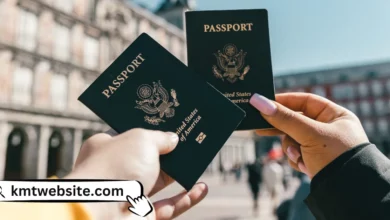Hürrilet: The Struggle for Freedom

The story of Hürrilet is one of the most inspiring tales of freedom in the history of the world. The newspaper was founded in 1915 by journalists who fought for the independence of Turkey. The newspaper fought for democracy, freedom, and human rights throughout its history.
1) HRRILET: The Struggle for Freedom
The Turkish Republic of Northern Cyprus, more commonly known as Northern Cyprus, is a de facto state that is recognized only by Turkey. The rest of the world recognizes the sovereignty of the Republic of Cyprus over the entire island, including the northern part.
Northern Cyprus declared independence in 1983, but its independence is not recognized by any country other than Turkey. The United Nations considers Northern Cyprus to be part of the Republic of Cyprus, and its population is not recognized as a separate people by any international organization.
Northern Cyprus is a beautiful country with a rich culture and history. Its people are friendly and welcoming, and its landscape is varied and scenic. However, the country is embroiled in a struggle for freedom and recognition.
The Turkish Cypriots have been fighting for independence for centuries. In the early 1900s, they formed an armed resistance movement against British colonial rule. After years of violence and bloodshed, the British finally withdrew from Cyprus in 1960.
However, the independence of Cyprus was short-lived. In 1974, the Greek military staged a coup d’état and attempted to annex the island to Greece. This led to a Turkish invasion of Cyprus, which resulted in the occupation of the northern part of the island.
Since then, the Turkish Cypriots have been fighting for independence. They have declared their own independent state, the Turkish Republic of Northern Cyprus, but this state is not recognized by any other country in the world. The Turkish Cypriots have also applied for membership in the United Nations, but their application has been rejected.
The struggle for freedom and recognition is an ongoing one for the Turkish Cypriots. It is a difficult and emotional battle, but one that they continue to fight.
2) The Background to the Struggle
The Turkish War of Independence was fought between the Turkish National Movement and the proxies of the Allies, namely Greece on the Western front, Armenia on the Eastern, France on the Southern and Russia in the Caucasus. These conflicts ended with the signing of the Treaty of Lausanne in 1923, which recognized the independence of the Republic of Turkey. However, the treaty also placed severe restrictions on the size and capability of the Turkish armed forces, and required the country to pay hefty war reparations.
The background to the struggle can be traced back to the final years of the Ottoman Empire. The Ottoman Empire had been in decline for centuries, and its once vast territory had been steadily shrinking. By the early 20th century, the Empire was reduced to a shell of its former self, and its people were living in abject poverty. In 1908, a group of reform-minded Ottoman officials called the Young Turks seized power from the Sultan and proclaimed a new constitution. The Young Turks promised to modernize the Empire and bring about social and political reforms.
However, the Young Turks quickly lost control of the situation, and the Empire descended into chaos. The First World War further weakened the Ottoman Empire, and by the time the war ended, the Turks were ready to fight for their independence. The Turkish War of Independence began in May 1919, just months after the signing of the Armistice that ended the First World War.
The Turkish National Movement was led by a charismatic leader named Mustafa Kemal, who later took the surname Ataturk, or “Father of the Turks”. Ataturk was a brilliant military commander, and he quickly gained the support of the Turkish people. The Turkish National Movement was also supported by the Soviet Union, which saw the independence of Turkey as a way to weaken the Western powers.
The Turkish War of Independence was a bloody and brutal conflict. The Turks fought against superior numbers and better-equipped enemies. They were also fighting on multiple fronts, and they had to contend with supply shortages and a lack of international support. Despite all of these difficulties, the Turks were able to achieve victory, and in 1923 they signed the Treaty of Lausanne, which recognized the independence
3) The Key Players in the Struggle
The key players in the struggle for freedom are the people who have dedicated their lives to fighting for the cause. They are the ones who have risked everything to bring about change. They are the leaders and the foot soldiers, the martyrs and the prisoners. They are the ones who have given their all for the cause of freedom.
The struggle for freedom is a long and hard one. It requires sacrifice and dedication. It requires a commitment to the cause that is greater than oneself. It requires a willingness to risk everything for the sake of the cause.
The key players in the struggle for freedom are the ones who have made the sacrifices and who have dedicated their lives to the cause. They are the ones who have risked everything to bring about change. They are the leaders and the foot soldiers, the martyrs and the prisoners. They are the ones who have given their all for the cause of freedom.
4) The Main Events of the Struggle
The struggle for freedom in Turkey began long before the founding of the Republic. For centuries, the Ottoman Empire ruled over the Muslim world, oppressing its people and denying them their basic rights. In the late 19th century, a group of reform-minded intellectuals known as the Young Turks began agitating for change. They wanted to modernize the Ottoman Empire and give its people more freedom.
The Young Turks succeeded in overthrowing the Ottoman government in 1908. They then embarked on a series of reforms, including granting more rights to women and minority groups. They also instituted a new constitution that guaranteed basic civil liberties. However, the Young Turks’ rule was short-lived. In 1913, they were overthrown by another group of military officers known as the Committee of Union and Progress.
The new government reverted back to the old ways of ruling. They suppressed dissent and instituted strict censorship. They also launched a series of military campaigns that led to the deaths of thousands of innocent civilians. In 1915, the government decided to deport and massacre Armenians living in Turkey. This event, known as the Armenian Genocide, claimed the lives of 1.5 million people.
The Ottoman Empire finally collapsed in 1918, after losing World War I. The Turkish people then formed their own Republic and began the struggle to build a new, free, and democratic society. This struggle has continued to the present day.
5) The Aftermath of the Struggle
The aftermath of the struggle for freedom in Turkey was a time of great upheaval and change. The country was in a state of chaos, with fighting continuing in many areas. There were also a number of political changes, as the government tried to stabilize the situation. This led to a period of great uncertainty, as people tried to adjust to the new reality.
The most immediate change was the end of martial law. This had been in place since the start of the struggle, and it meant that the military had a great deal of control over the country. With martial law lifted, the military’s power was greatly reduced. This was a major victory for the people who had fought for freedom, as it meant that they could now start to rebuild their lives.
However, the country was still in a state of turmoil. There were a number of different political factions, each with their own ideas about how the country should be run. This led to a number of different uprisings and protests, as people fought for their own vision of the future.
The government was also struggling to deal with the economic fallout from the struggle. The country’s infrastructure had been badly damaged, and there was a great deal of unemployment. This was made worse by the fact that many businesses had been destroyed or looted during the fighting.
In spite of all these challenges, the people of Turkey were determined to rebuild their country. They started to rebuild their homes and businesses, and to create new jobs. Slowly but surely, the country began to recover from the aftermath of the struggle for freedom.




